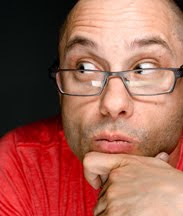Today it was pointed out that desaturating an RGB image doesn't give you accurate values, but converting to grayscale does. All these years I thought it was the same thing. Thanks, Tom.
...and the more idealized version. Because cantaloupes should look happy.
Dave Guertin (of Creature Box fame) kindly wrote in confirming the grayscale trick :
"Saw your recent blog post and thought you may get a kick out of a little photoshop tweak if you haven’t stumbled across it yet. Under 'View -- Proof Setup -- Custom' you can set the device to simulate to Gray Gamma 1.8. Now, whenever you hit 'cntrl+y' you get a realtime look at your values without the need to make any conversions. Hit 'cntrl+y' again and you’re back to color. You can also make adjustments in this mode."
Effing sweet!

6 comments:
a fun tip from feng zhu (of all people) is to set a layer to saturation and fill it black. put that at the top and then u can toggle values. maybe that helps. but great cantaloupe!
Sweet mother of God! O_O
I thought those 2 were the same also. Some further experimenting must be done. :D
Thanks for pointing that out Paul.
Yes I learnt about it recently too.
A colleague of mine went even further, showing me what he usually does to tweak values.
If you convert to Lab mode and display only the Lightness channel, you have a perfect conversion to grey scale (you basically hide all colour information).
You can then paint in B&W on the lightness channel without messing up with hue and saturation.
The tip I discovered is to create an adjustment layer for hue/saturation. Then you can dial the saturation all the way down on it and flick it on/off to check contrast periodically.
The hue/sat layer isn't accurate. Had been doing this for years, but it lies -- IT LIES!!!
Whaattt ! Oh god ! Thanks for the tip ! I ve been using a black layer on top in sat mode for years. gwaaaaaa !
Post a Comment